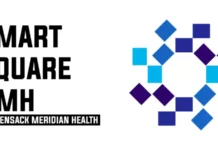Medicinal Chemistry is a field that deals with the study of the chemistry of medicines, synthesis, and mechanism of action. The field of study defines the chemical structure of medicine in terms of the functional groups, type of compound, bonds, and other properties. It closely analyses all the physical and chemical properties of the medicines. You can also read the Transplantation Journal.
The physical properties that are studied are:
Solubility: To determine how medicine should be formulated.
Crystalline Or Amorphous Nature: This indicates the flow properties which are essential while making capsules, tablets, pills, etc.
Light Sensitivity: Shows how medicine should be preserved. It the medicine is light sensitive, then it is kept in opaque packs.
Melting Point: Tells how stable the medicine is at room temperature and how it should be handled during its formulation. If the melting point is low, the medicine might have to be stored in cold temperatures.
The chemical properties that are studied are:
pH: If the compound is acidic, it means that the medicine is insoluble in acidic medium, here, stomach, and soluble in a basic medium such as the intestine. Hence, the pH value of the sample helps in designing a simple tablet or to release medicine in a specific medium.
Chemical Saturation: This level indicates the tendency of the medicine to react with other molecules.
What Are The Applications Of Medicinal Chemistry?
It helps in the development of effective medicines, minimizes toxicity, and produce the drug in an inexpensive manner.
Effective Medicine: A medicine is useful when it can kill the parasite, rectify a deficiency or alter a physiological state to the required level of well being. The effectiveness of the drug depends on factors like:
- Its reach to the remote parts of disease by solubility in non-aqueous parts of the body.
- Its ability to kill the parasite or produce the desired impact at low concentrations to minimize the bulk of medicine preparation.
- Its ability to avoid the development of resistance by a disease-causing agent or system.
Minimal Toxicity: Any medicine one takes a foreign substance to the body. So it is metabolized in the liver and excreted by the urine. Hence, the medicine prepared should be safe for the body and preferably be less toxic. Medicinal Chemistry Journal aims to make water-soluble drug molecules that can be easily metabolized. Otherwise, if lipid solubility is desired, then the molecule that can easily be converted to water-soluble forms are created. Therefore, the accumulation of drug toxins is controlled by medicinal chemistry.
Inexpensive Drugs: Most drugs used in life-taking diseases are expensive. This field can help find alternative drug molecules or in manufacturing methods to reduce the cost of the drug. This helps the drug to reach people belonging to all financial status.
Discover New Drug Molecules: The discovery process is done with a method of QSAR that is the qualitative structure-activity relationship. As people develop insensitivity to drugs or there is resistance to medicines by microbes, medicinal chemistry helps to add new molecules to treat diseases better.
Alternatively, if a substance is found to show some healing effects, it is isolated and tested for its chemical characteristics. After this, a similar molecule is made with all the required properties to create an effective drug molecule.
This also minimizes the time needed for drug discovery. Previously, all the molecules with expected therapeutic value were synthesized first and then tested on animals which are an expensive and time taking process.
Currently, medicinal chemistry uses the method of Computer-Aided Drug (CAD) discovery to reduce the time taken for drug discovery. This avoids the need to synthesize all the test molecules and test them on many animals as well. By using CAD, the drug molecule and its capability to work on a receptor are interpreted.



































































